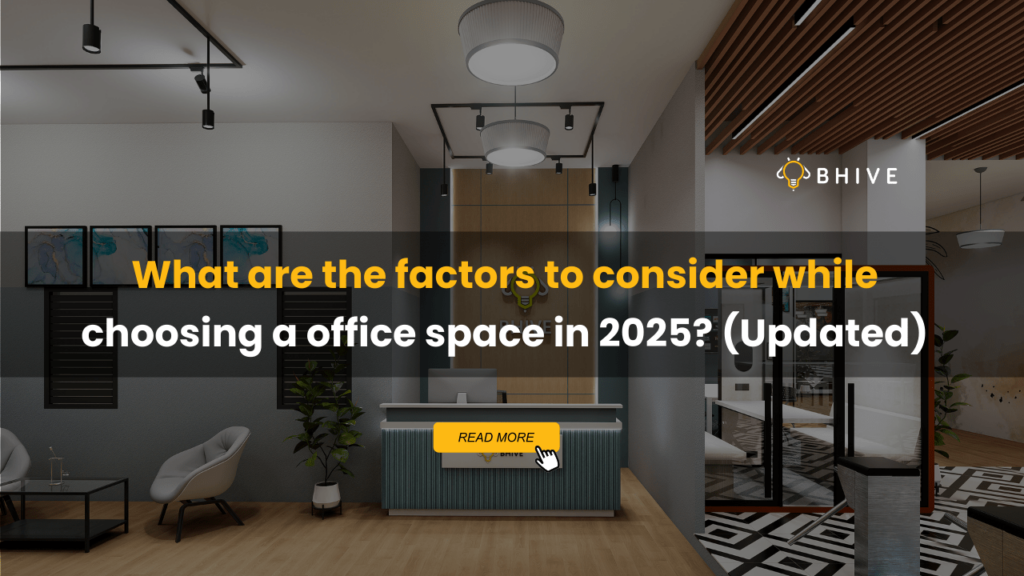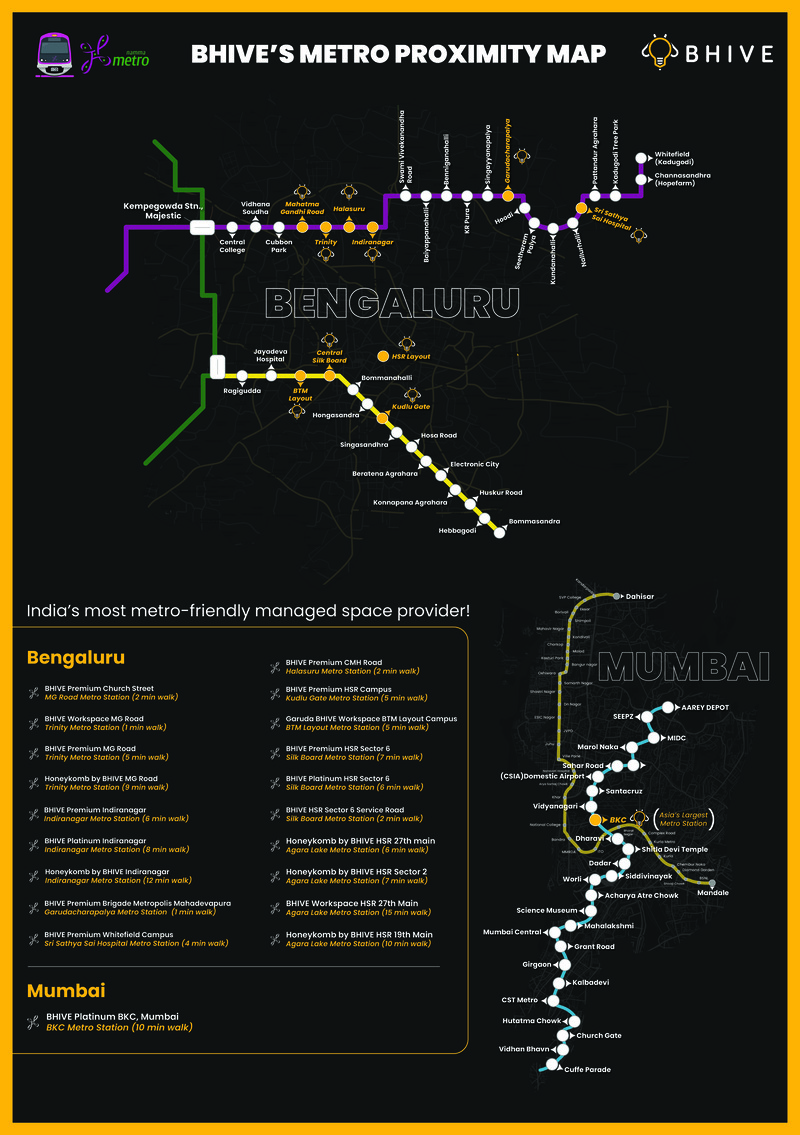Office Space Trends 2024: What Should We Look For?

As we are in 2024, the environment of office spaces continues to change, driven by dynamic trends and evolving paradigms. Among these developments, the rise of managed workplaces is an example of adaptation and creativity. Managed offices meet the demands of modern organizations and their employees by providing flexibility, affordability, and various facilities. This article will look at the emerging field of managed offices and the exciting 2024 office space trends that will shape office space management in the next few years.
The Office Space Trend 2024 of Shifting Towards Managed Offices
Managed offices have evolved as a critical component of modern workplace solutions, indicating a paradigm change in office space management. These facilities, known for their flexibility, scalability, and complete service offerings, are gaining appeal as firms’ demands evolve. Managed office spaces provide a comprehensive option for businesses seeking hassle-free office spaces.
It includes amenities, technological integration, and specialized services targeted to specific needs. As organizations prioritize agility and efficiency, the attraction of managed offices grows, establishing them as a critical participant in transitioning traditional office landscapes into dynamic, flexible, and future-proof workplaces.
Also read: Why is there a significant corporate shift towards Managed Office Spaces?
Book Your Managed Office Space
Factors Driving the Growth of Managed Offices
Several elements that fulfill the changing demands of both organizations and people are driving the expansion of managed offices, such as:
Flexible and Scalable
Managed offices provide unprecedented flexibility and scalability, providing flexible solutions for enterprises navigating changing market environments. By offering adjustable workspace alternatives, organizations may easily modify their office footprint to meet changing demands without the limits of long-term leases or commitments. It promotes adaptation and development.
Cost-effectiveness
Managed offices provide a strong value proposition by reducing the upfront capital costs associated with typical office installations. Businesses may improve cost structures using a pay-as-you-go approach. It lowers administrative costs and improves financial predictability, freeing resources for strategic expenditures and operational goals.
Amenities and Services
Managed offices’ extensive range of amenities and services demonstrates their dedication to improving worker environments. Businesses gain from a turnkey solution that simplifies operations and creates a work atmosphere favorable to productivity and creativity. This solution includes everything from cutting-edge furniture and IT infrastructure to utilities, sanitation services, and maintenance assistance.
Enhanced Emphasis
Managed offices promote workers’ overall well-being and productivity, seeing them as the foundation of corporate success. Businesses create a healthy workplace culture by creating contemporary, pleasant offices supplemented with recreational areas, wellness initiatives, and community-building activities.
Access to Technology
Managed offices use cutting-edge technology to provide organizations with seamless connection and productivity capabilities required for success in today’s digital age. Businesses may access the necessary technology infrastructure to foster innovation and cooperation across geographic boundaries. It includes high-speed internet, video conferencing facilities, intelligent building management systems, and digital collaboration platforms.
Agile Workforce Solutions
In response to the growing tendency of remote work and dispersed teams, managed office workspaces provide flexible solutions that address the many demands of contemporary worker dynamics. Businesses that provide flexible workspace solutions allow workers to work from anywhere while still having access to professional facilities that promote collaboration, creativity, and productivity. It builds a culture of work-life balance and independence.
Suggested Read:
- Financial Benefits of Managed Office Spaces
- How to choose the right managed office space for your Business?
Technology Integration
Technology integration is critical to contemporary managed offices, transforming how firms function and people communicate. These workplaces use cutting-edge technologies to increase efficiency, connection, and productivity. Managed office spaces offer seamless connectivity for remote and in-office employees, with high-speed internet, robust Wi-Fi networks, and advanced tools for interaction and collaboration like video calling systems and digital whiteboards.
IoT devices and intelligent building management systems also improve security, energy efficiency, and space usage, resulting in a safe and sustainable workplace. Data analysis and automation further simplify processes, allowing firms to make data-driven choices and better allocate resources. Managed offices enable companies to develop, innovate, and adjust to changing work practices in a more digitally connected world. This improves organizational performance and the work experience for all employees.
Hybrid Work Models
In 2024, Hybrid office space models have evolved as a disruptive way to work, combining the flexibility of remote work with the advantages of in-person cooperation. These models allow employees to select where and how they work by organizational and individual requirements while accommodating a wide range of work preferences and demands. Workers can work remotely or from a defined office in a hybrid work arrangement. This flexibility enables people to balance their professional and personal lives while being productive and collaborative.
Key Components
- Flexibility: Employees can pick their work location based on task needs, individual tastes, and lifestyle considerations. This flexibility improves work-life balance, which increases employee happiness and retention rate.
- Remote Work Infrastructure: Sturdy remote work infrastructure is necessary for hybrid work models. This includes safe access to corporate networks, online collaboration tools, and efficient communication routes. This allows for seamless communication and cooperation regardless of physical location.
- Office Space Consumption: Hybrid work models maximize office space consumption by accommodating a subset of employees at any moment. This minimizes the need for massive, permanent office spaces and enables firms to implement more adaptable and cost-effective workplace options, such as hot-desking and shared spaces.
- Opportunities for Cooperation: While working remotely gives you freedom, face-to-face cooperation encourages innovation, creativity, and cohesive teamwork. Hybrid work models create a balance by allowing face-to-face connection, team meetings, and discussions in specific office locations.
- Communication and Culture: Successful hybrid work arrangements require efficient interaction and a strong company culture. To preserve team cohesiveness and alignment with corporate goals, organizations must develop clear communication procedures, encourage openness, and foster belonging among remote and in-office personnel.
Emphasis on Health and Wellness
The importance of fitness and well-being in the workplace has grown, particularly in light of the pandemic. Managed workplaces are increasingly including wellness activities to promote employee well-being. This incorporates components of biophilic design, adjustable workstations, and ergonomic furniture to improve comfort and lower stress levels.
Fitness facilities, recreational spaces, and wellness programs all help to encourage physical exercise and mental well-being. Managed offices prioritizing health and wellness generate work environments that promote employee productivity, retention, and satisfaction—all critical components of a thriving business culture.
Office Space Trends 2024 of Collaborative Workspaces
Collaborative areas are essential in modern workplace design, promoting creativity, imagination, and teamwork. Managed workplaces use these spaces intentionally to encourage employee contact and idea sharing. Open-plan arrangements encourage spontaneous collaboration, while specific project spaces and huddle rooms provide solitude for more concentrated talks.
Collaboration zones featuring whiteboards, video calls, and comfy chairs boost productivity and engagement. By providing collaborative settings, managed offices enable teams to interact successfully, exchange expertise, and promote collective success. These locations are critical for building business culture, stimulating cooperation, and instilling a feeling of belonging in employees.
Conclusion
To summarize, as we negotiate the changing 2024 office space trend, the growth of managed office space serves as a beacon of adaptation and creativity. Managed offices, emphasizing sustainability, flexibility, technological integration, and employee well-being, are revolutionizing how organizations approach workplace solutions. Organizations that adopt these trends and capitalize on the benefits of cooperative, hybrid workspaces may create agility, efficiency, and resilience in unpredictable market dynamics, assuring future-ready workspace solutions for long-term success.
BHIVE represents the future of workplace solutions. Discover flexible, technologically advanced, and environmentally friendly managed offices to elevate your business. Join us in establishing a dynamic, collaborative atmosphere that promotes creativity, productivity, and well-being. Take the next step toward workplace greatness with BHIVE now!
You can also schedule a visit or book a day pass to experience professional work environment.
Know somebody looking for an office space? You can refer here: Refer and Win







